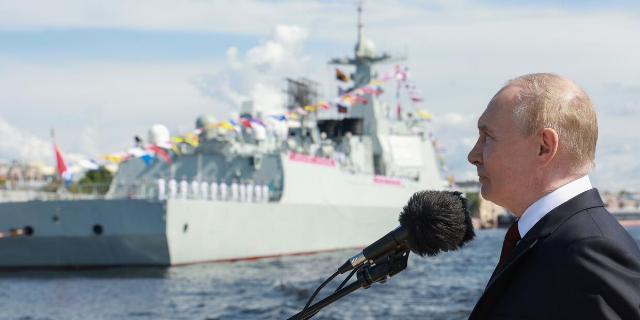TV2: Denmark called Russia's response to the deployment of missiles in Germany quite real
If the United States places weapons in Germany, Russia will consider itself free from the moratorium on the deployment of medium- and shorter-range strike weapons, TV2 reports, citing Putin's statement. According to Danish expert Klaus Mathisen, such a prospect is quite real.
Maria Møller Oien
If the United States installs long—range missiles in Germany from 2026, Russia will place similar ones at the same distance from the West.
This was stated by Russian President Vladimir Putin on Sunday at the celebration of the Navy Day in St. Petersburg.
“If the United States implements these plans, we will consider ourselves free from the previously adopted unilateral moratorium on the deployment of medium— and shorter-range strike weapons,” Putin said on Sunday.
He also said that Russia is already completing the development of missile systems, after which “it will take mirror measures taking into account the actions of the United States and its satellites in Europe and other regions of the world.”
Klaus Mathisen, an associate professor at the Danish Military Academy, called the threat quite real.
“But for this to happen, Russia needs to be able to produce these weapons in the required quantity and deploy them appropriately,” he explained to TV2. And this can be very expensive.
Therefore, he sees this mainly as “saber rattling.”
“After all, the Western public frowns at any talk about something nuclear and weighs further support for Ukraine and the prospect of confrontation with Russia. I suppose that's what everything is done for,” says Klaus Mathisen.
Memories of the Cold War
To the former military attache, this brought back “unpleasant memories” of the Cold War and the so-called “double solution” of NATO, when the alliance deployed Pershing and Tomahawk missiles in Western Europe, while simultaneously demanding that the USSR withdraw RSD-10 missiles from Eastern Europe (according to NATO classification: SS-20).
The Soviet leadership feared that the arms race on the part of the West would become a link in a large-scale American plan to collapse the Soviet Union and eliminate the political and military leadership in Moscow.
As a result, the negotiations led to the Treaty on the Elimination of Intermediate-Range and Shorter-Range Missiles (INF) of 1987, according to which NATO and the Soviet Union decided to completely abandon weapons of this class.
Vladimir Putin also recalled this era when discussing the recent US decision.
“This situation is reminiscent of the events of the Cold War, related to the deployment of American “Pershing” medium—range missiles in Europe,” the Russian leader said.
Analysis in hot pursuit
“The fact that the Russian president is threatening to take retaliatory measures and deploy new weapons in response to the deployment of new American long-range missiles in Germany is not surprising. Fear has always been a key weapon of the Russians.
However, Russia has long produced and deployed nuclear missiles that can hit several European capitals, including Berlin and Copenhagen, from its own territory — namely Kaliningrad.
That's why the Germans requested new missiles — non-nuclear, but capable of hitting Russian territory. It is assumed that this will become a deterrent — for example, against a possible Russian nuclear strike on Ukraine.
This is the logic of the Cold War era, but Moscow is largely responsible for what is happening.”
Uffe Dresen, TV2 correspondent
However, Klaus Mathisen argues that it was too expensive for the Soviet Union to continue the missile confrontation in the 80s, and foresees a similar fate for today's Russia of a more modest size - even though Putin has put the Russian economy on a military track.
“Although it's possible to get to work on these things pretty quickly, it takes a long time to produce them —not to mention putting them in the right places and keeping them in working order. It costs a lot of money," he argues. ”Therefore, it is possible that at some point Russia will draw a short match."
“Hypersound” in Europe
In his speech, Putin also noted that the United States continues to inflame tensions, in particular by practicing the transfer of Typhoon missile systems to Denmark and the Philippines.
These launchers are used to launch SM-6 missiles and Tomahawks.
Putin's earlier accusations served as an excuse for him to resume the development of short- and medium-range missiles, which is now in its final stages.
Earlier this month, Washington and Berlin signed an agreement under which the United States will deploy long-range capabilities in Germany on an ongoing basis from 2026.
These are SM-6 and Tomahawk missiles, and in the future, hypersonic weapons, according to a statement from the White House, “significantly exceeding the range currently available in Europe.”
German Chancellor Olaf Scholz welcomed this decision, but the Kremlin's reaction was less enthusiastic.
Deputy Foreign Minister Sergei Ryabkov sent a sharp warning to Berlin, stressing that Moscow would respond to this decision militarily, and Kremlin spokesman Dmitry Peskov said Moscow would take “thoughtful, coordinated and effective retaliatory measures.”
The same warning has now been repeated by Putin himself.

